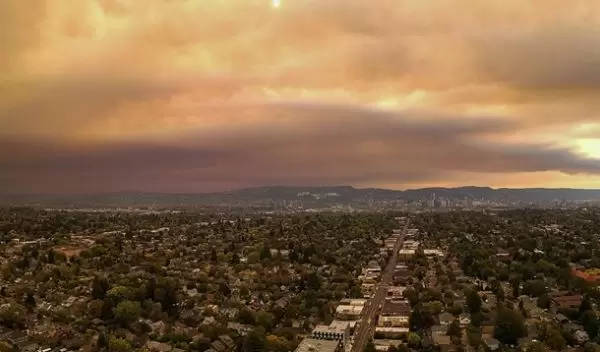
Human-caused climate factors exacerbate extreme fire risks
Human activities have increased the likelihood of hot, arid, windy autumn weather and dry forests by 40% in California and Oregon, setting the stage for severe wildfires, new computer models show.
The study, led by Oregon State University's Linnia Hawkins, looked at the role climate change may have played in extreme fire weather conditions that accompanied recent large September, October and November fires in those states.
The U.S. National Science Foundation-supported findings were published in Geophysical Research Letters.
The work examined weather conditions during big fires driven by strong offshore winds, such as California's Santa Ana and Diablo winds and western Oregon's East wind.
"Over the last handful of years, California and western Oregon have experienced their largest and most destructive wildfires ever recorded," said Hawkins. "The rapid and extensive growth of many of the fires was driven by strong, dry, offshore, downslope autumn winds blowing across fuels that had become very parched over the summer and stayed that way into fall."
The research team focused on conditions like those seen in recent catastrophic fires, including Northern California's Wine Country fires in October 2017; the Camp Fire in November 2018; the North Complex Glass fires in September 2020; Southern California's Woolsey Fire in November 2018; and western Oregon's Lionshead Fire in September 2020.
"We found that when CO2 and aerosols from human activity were included, the chance of extreme conditions was 40% higher in areas of California and Oregon where recent autumn fires have occurred," Hawkins said. "The jump was mainly because of an increase in temperature and fuel aridity and not an increase in wind speeds."
The scientists emphasize that the increase is the average across the Western United States, and that the increase is smaller or larger in specific regions. They also say that this study examined extreme fire weather conditions as opposed to average conditions and only in one season of the year.
"What our research demonstrates is that anthropogenic climate change has already increased the likelihood of autumn wind-driven extreme fire weather conditions in the West," Hawkins said. "Together with non-climatic factors like biomass accumulation and more people living in the wildland-urban interface in fire-prone lands, that means overall fire risk is going up. Approaches such as we used here can guide fire risk assessments and fire adaptation efforts."


